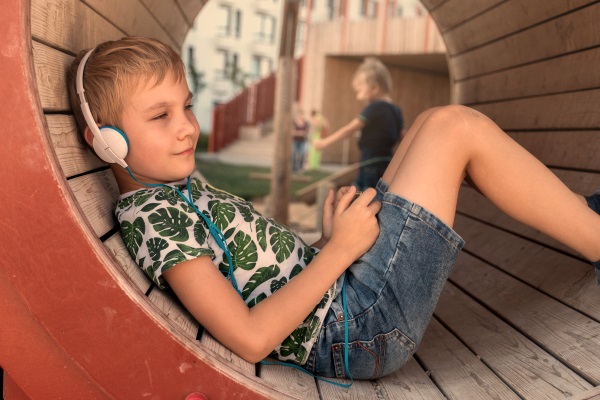The only characteristic that appears to be universal in children with autism spectrum disorder (autism) is that there IS no universal, one-size-fits-all characteristic. Every child with autism is unique—from the age of onset of the disorder to a child’s patterns of behavior, and the progression of the condition. And while the reason is unclear, the numbers of children diagnosed with autism continue to rise.
Jennifer:
Our son was diagnosed with autism at four years of age. We had already begun pursuing additional assistance for him and he had been in Occupational Therapy for almost a year, which had helped some.
As to early symptoms, he was always just “himself.” He had BIG emotions with the tendency to be physical when upset, frustrated, or misunderstood. He is now nine and continues to utilize various kinds of supports.
Autism is something that truly is different for each autistic individual. As a caregiver, I have realized that providing support is a delicate dance and it constantly changes. Tools that worked before may not work for a while and their interests change. We need to be prepared to learn about what excites them and to be engaged in their world.
My child has taught me that there are several different types of communication styles and as an advocate, it is my job to help share with the world around him the different ways he “talks” and communicates. Autistic individuals tend to use identity-first language because their autism is a part of who they are. They are lifelong learners. This means that just because they aren’t doing things per milestone expectations does not mean that they will never learn how.
What is autism spectrum disorder (ASD)?
Autism is related to how the brain develops and affects the way a child interacts with others. Behavior patterns tend to be repetitive and as a “spectrum” there is a wide range of symptoms that vary in severity.
While there is much to be learned about autism, according to Mayo Clinic a few risk factors stand out:
- Boys develop autism four times more often than girls.
- Girls are more difficult to diagnose as they are more likely to mask symptoms.
- If a family has a child with autism the chance of having another child with it increases.
- Preterm babies (born before 26 weeks) are at higher risk.
Certain medical conditions (fragile X syndrome, tuberous sclerosis, and Rett syndrome) lead to a higher risk of autism or similar symptoms in children.
Angie:
Our child was diagnosed at age 2-1/2 and just turned 12. Early on, the red flags were the fixation on certain toys and lining up toys. There was no interest in socializing with other kids, little eye contact, and no response if spoken to. One-on-one therapy at the Autism in Motion (AIM) clinic has helped tremendously.
Through our experience we’ve come to realize that each child learns in a different way. Finding that way can be difficult and rewarding. Patience and consistency are needed so they can grow.

What are the symptoms of autism?
Autism begins in early childhood. Symptoms and behavior patterns may appear before the child turns one or children may develop symptoms and begin regressing between one to two years of age.
Symptoms include:
- Poor eye contact/facial expression
- Failure to respond to your voice
- Prefers playing alone
- Delayed or lack of speech
- Avoids being held
- Lack of emotion
- Socially awkward or disruptive
Behavior patterns:
- Repetitive movements
- Self-harms (biting or banging head)
- Routines/rituals important
- Light/sound/touch sensitivity
- Focuses intently on object/activity
- Food preferences (tastes, textures, self-limiting food choices)
Some children with autism may connect more easily with others over time, while others may exhibit ongoing behavioral issues that grow worse in their teens. Each child is different.
Ray:
Our son was 4 years old when diagnosed. We noticed he was overly active, didn’t sleep well at night, had repetitive behaviors, plus a speech delay. However, he could recognize and point out shapes, colors, and words at 12–18 months. He benefited from services provided by the school district and from other therapies. He is now 18 years old. Progress for him has always been slow with some things, but he has excelled in other areas.
There is a lot of hope for families of children with autism and there are many wonderful people in this community that have helped our family. We recommend taking advantage of resources available to your child—resources that may be a good fit for your child. It’s best if families learn as much as they can about autism and over time you will adapt to their needs.
Baby and Child Developmental Milestones
Skills and age-specific tasks that most children can do occur around these age ranges. If you are concerned about delays in your baby’s development, learn more about key events in development:
- 2 months: Begins smiling/coos
- 4 months: Babbles, copies sounds
- 6 months: Likes playing with parents/others
- 9 months: Mimics sounds and gestures
- 12 months: Plays peek-a-boo or pat-a-cake
- 18 months: Plays pretend games
- 24 months: Two to four word sentences
Pediatric services at Glacial Ridge’s Occupational Therapy department are offered from birth on up to treat a wide variety of diagnoses such as autism, developmental delays, strength and fine motor deficits, and sensory or behavioral issues.
There is no cure for autism spectrum disorder, but early recognition of ASD can help connect you and your child to therapeutic resources, so talk to your child’s doctor.


